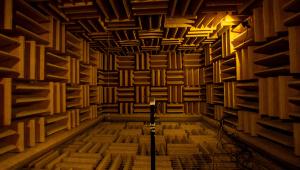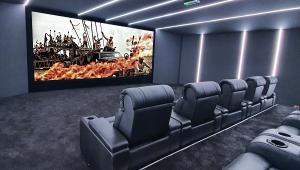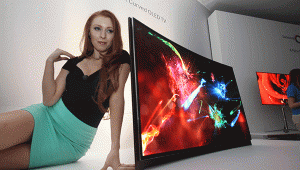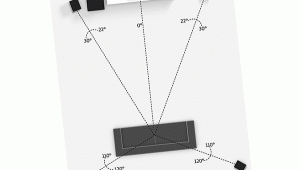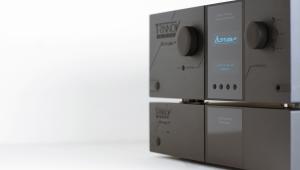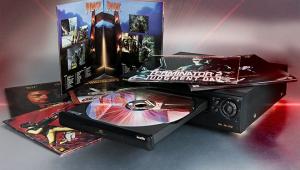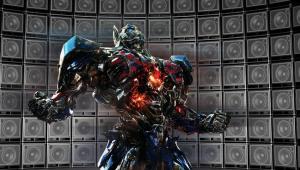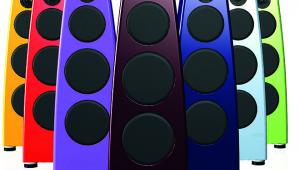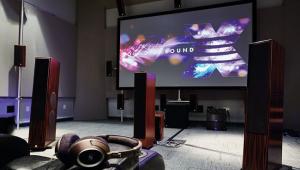Dynaudio: inside the speaker corp's state-of-the-art measurement facility
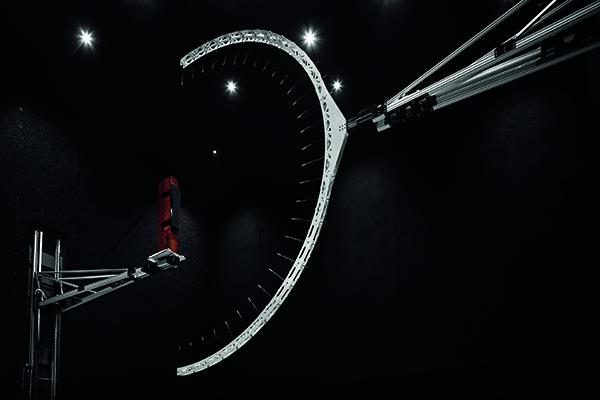
The company has been based at the same site since it launched in 1977 with the avowed aim of producing the purest-sounding products it could. Most recently this ambition has driven Dynaudio to increase its home cinema options, including a new in-wall/in-ceiling Custom Performance series. It was these models that I was here to see, in the company of Roland Hoffman, Dynaudio’s Academy Director. But I was equally excited to be paying a visit to the room the manufacturer calls 'Jupiter'...
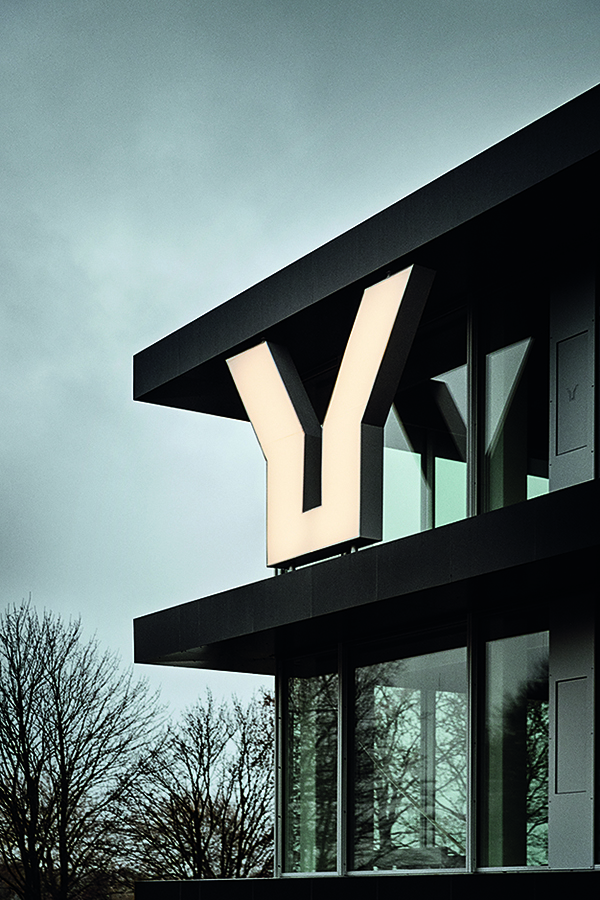
Driven to perfection
First, though, Hoffman was keen to discuss the ethos behind Dynaudio's product development, particularly its driver technology. He began with the ring magnets used to propel its speaker cones. Eighty different types are created on-site, and as the company magnetises its own core material, it has control over the level of magnetism for each end scenario.
It's choice of cone material, however, that is perhaps the most crucial decision any loudspeaker manufacturer has to make. 'There is a huge choice of materials out there,' admits Hoffman. 'Everything has pros and cons. Paper cones can be prone to humidity variations, thin metal can present colouration issues, so you probably need to do something in the crossover to compensate. Kevlar offers good damping, but lacks a little bass – you can stiffen it, but then that has disadvantages too. We avoid many of these issues by using our own unique material developed in-house.'
This is Dynaudio's Magnesium Silicate Polymer (MSP) membrane, which has been created to deliver low mass, high rigidity and strong internal damping properties. The cones' geometrically optimised form also aims to produce an even dispersion, while dust caps, often found at a diaphragm's centre, are eschewed. Having a hole in the centre of the cone with a dust cap glued in place creates compromises in the sound that have to be countered elsewhere, I was told. The company instead creates single-piece drivers that the rest of the speaker can be built around.
Voice coils are another vital consideration. 'A key issue with coils is the length,' explains Hoffman. 'The longer the coil, the more range the speaker has, but if the coil is too large, the extra weight causes performance issues. While most makers use copper, we use aluminium. It has half the mass, so we can have more windings before you encounter any weight problems. It gives us the performance we want.'
Stepping into the company’s tweeter production area, I'm told that, once again, Dynaudio chooses a path less travelled, opting for a soft dome design [pictured below] given a bespoke coating (the exact make up of which is a guarded secret). Hoffman admits the way Dynaudio produces its tweeters is more time consuming than some other methods – once the drivers are coated they have to be dried in special cabinets for eight-to-nine hours – but this is preferred to using a harder material that, while responsive, can introduce unwanted resonance.
Uniformity of design and production is critical in audio, especially in home cinema where multiple cabinets are in play. This, says Hoffman, is why his company goes to great lengths to make sure each speaker in a given family is exactly the same. All are tested before they leave the factory; it's only then they get a sticker and serial number for authentication.
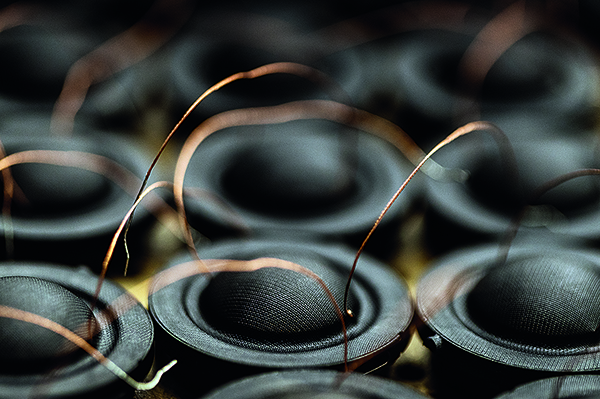
Space invader But before those final quality control checks, Dynaudio's attention is on the design of the speaker itself. And in 2016, as part of its new R&D centre – Dynaudio Labs – it opened a measurement chamber allowing it to assess every design many times, and with extreme accuracy.
Dubbed a Free Field Impulse Measurement Room, but nicknamed Jupiter (after the king of the Roman gods – who was also the arbiter of truth), it features an array of 31 microphones spread across a semi-circular frame. In around 20 minutes via 60 different positions, it can do a full assessment of a speaker design when conventional setups might take many hours. The impetus behind its construction was to give the speaker brand scope to do more testing at every stage of product development.
The sheer size of the room – essentially a 13 metre cube and the largest such facility in Europe – is imposing enough, but there is a good reason for the scale. Jupiter's apparatus can take accurate readings of a speaker before any reflections occur, effectively removing the room from the equation altogether.
Seeing it in action is deeply impressive, and like something out of a sci-fi movie. The speaker is automatically raised on a platform ready to be measured, and the microphone array moves around it in total silence. Witnessing a piece of equipment that large move but make no sound at all, really does make the hairs on the back of your neck stand up. The platform is used for most conventional models, but there is also a cavity in the room’s floor to test custom install designs.
The benefit of this process, beyond wowing visitors, is that any small adjustments that need to be made to the crossover can be done early in the design, while the room allows easy measurement of how the speakers perform off-axis. Engineers on any project, I was informed, always demand more time, while practicalities and commercial pressures often mean the opposite. With this room, they can have it.
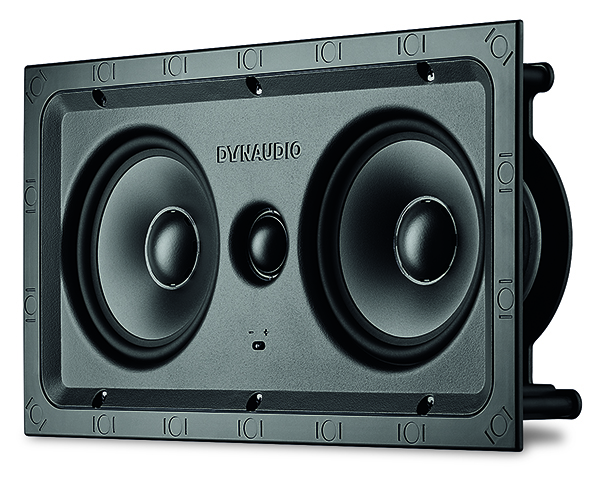
Listening time
My factory tour finished, it was time to check out Dynaudio’s latest offering, its install-focused Custom Performance series, which will slot into its overall product stable below the Custom Studio line, launched in 2018. In-wall and in-ceiling models are available, with each designed to deliver placement advantages, such as a thin form factor, without compromising on sonic delivery.
The in-wall range encompasses three models: the P4-W65; its bigger brother, the P4-W80; and an LCR model, the P4-LCR50. The two surround speakers are two-way designs, both using Dynaudio's 28mm soft dome tweeter but with a 6.5in midbass driver in the smaller model, and an 8in unit in the P4-W80. The LCR speaker features twin 5in midbass cones.
In-ceiling shoppers can choose from the P4-C65 (1 x tweeter, 1 x 6.5in midbass), P4-DVC65 (2 x tweeters; 1 x 6.5in midbass), and the P4-C80 (1 x tweeter and 1 x 8in midbass). There's also an in-wall subwoofer on the way.
The aim of the new lineup, says Hoffman, is to deliver high performance from a strong price point (prices range from £300 to £375), as well as provide ease of install. The in-wall enclosures use a simple dogleg and screw connection method, while the in-ceilings have a twist-and-fix fitting so a single-person installation is possible.
A demo found the speakers to be full-ranged, detailed and agile, and seemingly able to go loud without fuss. For those looking to top off a home cinema with Dolby Atmos models, kit out a multizone audio system or assemble a fully integrated multichannel setup, these should appeal – particularly if budget is an issue.
This article first appeared in HCC #302 in August.
 |
Home Cinema Choice #351 is on sale now, featuring: Samsung S95D flagship OLED TV; Ascendo loudspeakers; Pioneer VSA-LX805 AV receiver; UST projector roundup; 2024’s summer movies; Conan 4K; and more
|


